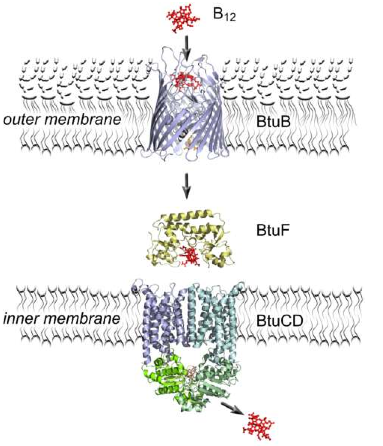Team:Paris/Transduction overview transduction
From 2009.igem.org
iGEM > Paris > Reception > Transduction
B. Transduction
B.1 ABC transporter
The ABC transporter is a major class of cellular translocation machinery encoded in the largest set of paralogous genes.
The ABC (ATP binding cassette) transporter is one of the active transport systems of the cell,
which is widespread in archaea, eubacteria, and eukaryotes. It is also known as the
periplasmic binding protein-dependent transport system in Gram-negative bacteria and the binding-
lipoprotein-dependent transport system in Gram positive bacteria. The transporter shows a common
global organization with three types of molecular components. Typically, it consists of two integral membrane proteins (permeases)
each having six transmembrane segments, two peripheral membrane proteins that bind and hydrolyze ATP,
and a periplasmic (or lipoprotein) substrate-binding protein. The ATP-binding protein component is the most
conserved, the membrane protein component is somewhat less conserved, and the substrate-binding protein
component is most divergent in terms of the sequence similarity. The ABC transporters form the largest group of paralogous genes in bacterial
and archaeal genomes , and the genes for the three components frequently form an operon.
B.1.1 Uses
transport the protein directly into the cytolpasm to activate the transcription.
B.1.2 Advantages/drawbacks
advantages:
the protein of interest is directly translocated in the cytoplasm and if it is a transcription factor it could activated immediatly the response.
drawbacks:
It is a nutriment uptake system, so basically only small molecules are able to pass throught the membranes and it is a very specific.
 "
"
